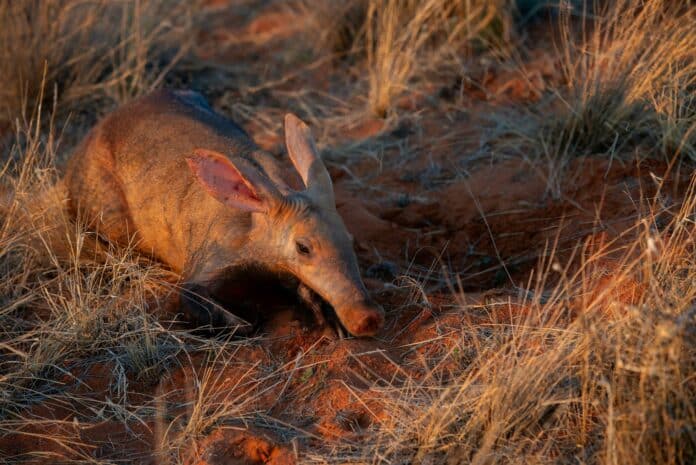Aardvarks in sub-Saharan Africa, scientifically known as Orycteropus afer, play a crucial role in the environment. However, they are affected by human activities and the growing dryness in the region.
They are nocturnal, burrowing mammals that can weigh up to 180 pounds. They have long snouts, similar to a pig, that they use along with their claws to locate and dig out ant and termite hills. They are found over much of the southern two-thirds of Africa.
Up to 18 subspecies have been described from morphology, but the validity of those subspecies is still being determined. Dispersal, population structure, and phylogeography remain uninvestigated.
A new study from Oregon State University used individual, population, and landscape genetic approaches to infer the influence of landscape, climate, and potential adaptive differences on gene flow. For this study, scientists spent months in sub-Saharan Africa collecting poop from the animal. They concluded that aridification of the landscape is isolating them, which they say could have implications for their long-term survival.
Scientists used genetic information gleaned from 104 aardvark poop samples to begin to understand the range of where they live.
Rachel Crowhurst, a wildlife geneticist who works with Epps and co-authored the paper, said, “During times of rapid environmental change, evaluating and describing changes in the landscape where a species lives is important for informed conservation and management decisions.”
According to scientists, the species needs to be studied more because they are nocturnal, challenging to catch and live in small numbers across vast and often hard-to-reach areas.
Scientists have studied aardvark DNA in the past for studies of mammalian evolution, but never across wild populations.
Therefore, scientists in this study surveyed eight protected and four privately owned areas in South Africa, two protected areas in Eswatini (formerly Swaziland), and a location in Kenya. They collected 253 fecal samples and analyzed 104 of the highest quality for genetic information.
Later, by using genetic information, they inferred aardvark distribution and movement across the landscape. For instance, by using genetic testing on fecal samples from various locations, if they found out that the samples came from the same aardvark, they used this data to figure out how far each aardvark traveled.
In South Africa, the genetic details they collected indicated that aardvarks in the western, central, and eastern regions were somewhat separated. They found individual aardvarks in multiple places up to 7 kilometers apart, suggesting that their home ranges might be more extensive than previously thought, especially in dry areas where food may be scarce.
They discovered closely related aardvarks separated by as much as 44 km, and those within 55 km were more genetically alike. This suggests that aardvarks may travel up to 55 km from their birthplace. In the study region, they observed more genetic differences among individuals when the landscapes between them were drier, indicating restricted movement in those areas.
The scientists intend to expand their study by analyzing more genetically diverse samples and conducting fieldwork across a broader region in sub-Saharan Africa.
Clint Epps, a wildlife biologist at Oregon State, said, “Our initial findings suggest that climate change will increase habitat fragmentation and limit gene flow for aardvarks, particularly where precipitation is expected to decrease and temperature increase. With aridity expected to increase in southern-most Africa under most climate change scenarios, the need for further research is clear.”
Journal Reference:
- Clinton W. Epps, Rachel S. Crowhurst, Robert Spaan, Matthew Weldy, Hannah F. Tavalire. Influence of climate and landscape on genetic differentiation of aardvarks (Orycteropus afer). Global Change Biology. DOI: 10.1111/gcb.17088
